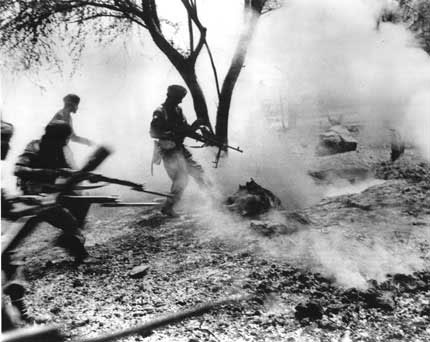Bayonet movements and sequence of instruction:
Flat blade stance
Footwork (Steps forward, back, left, right, forward and rear pass, pivot)
Quick thrust (Intended to provide opposition for partner executing flat blade movements and as follow up movement after slashes.)
Slashes (vertical hand-cut, lateral, reverse.)
Parries (left and right)
Hand Cut – Throat Slash (with left Parry)
Double parry (left) – Hand Cut – Throat Slash.
Disengage (from left Parry) – Hand Cut – Throat Slash
Above three movements (Hand Cut, Double Parry and Disengage) done from right parry.
Downward Parry – Throat Slash
Feint Low – Slash (Left and Right)
Throw Point
Butt Strokes (Vertical, Horizontal, Smash, Rearward)
Night fighting tactics (Extremely low crouch with rifle butt close to or on deck and a minimum of movement, looking upward for opponent to be silhouetted against sky, maximum speed during attack).
Bayonet vs. Knife, vs. Club, vs. Unarmed Combat.
(Hand Cuts and throat slashes)



















 PM
PM



